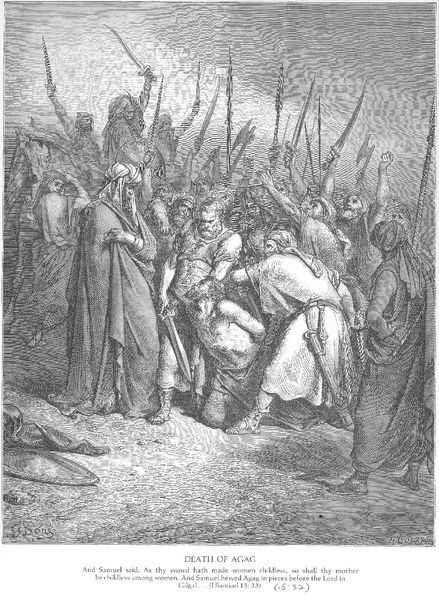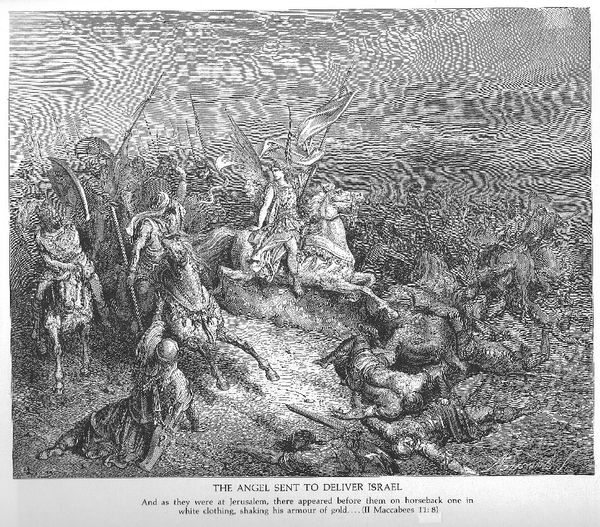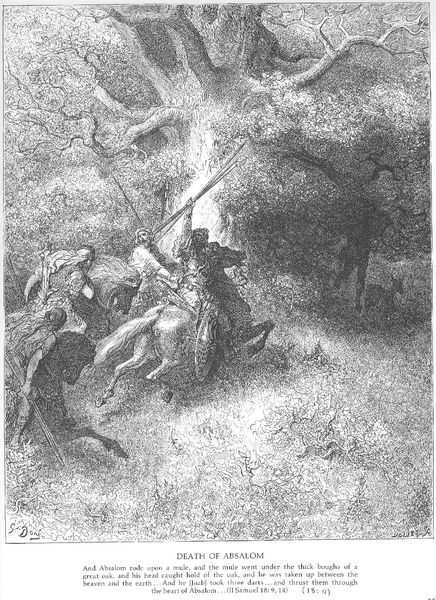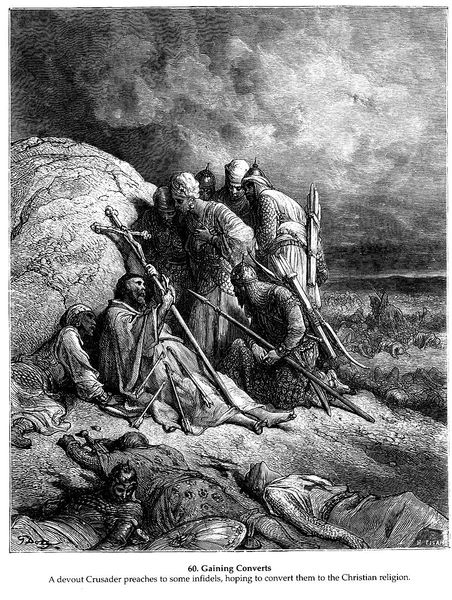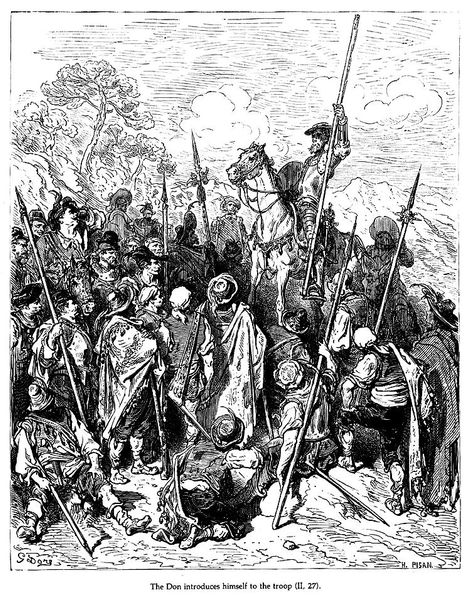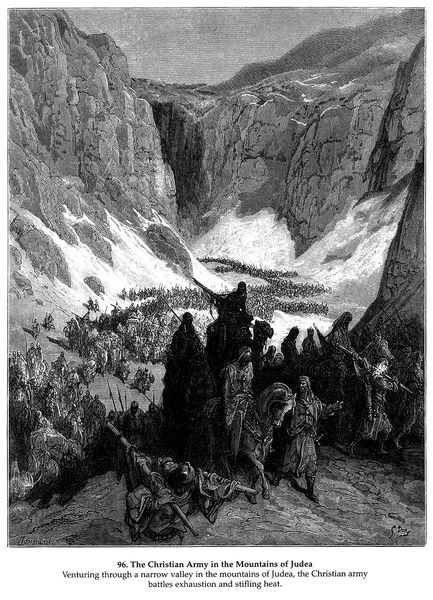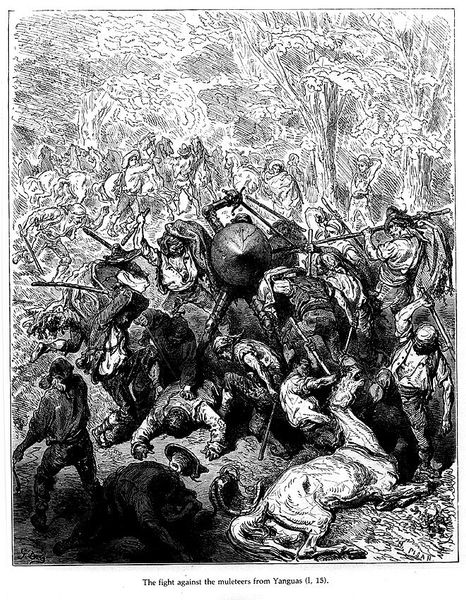
drawing, print, engraving
#
drawing
#
medieval
#
narrative-art
# print
#
war
#
figuration
#
christianity
#
line
#
history-painting
#
engraving
#
christ
Copyright: Public domain
Editor: This print is called "Combat between Soldiers of Ish-bosheth and David" by Gustave Doré. It depicts a chaotic battle scene, made even more intense by the intricate lines and stark contrast of the engraving. What strikes me is the overwhelming sense of conflict and almost claustrophobia, but what do you see in this piece? Curator: The density you note is key. Dore uses the visual symbol of conflict to speak to the broader human condition. Note how he uses a flurry of dark lines to capture the brutal energy of war. The figures become almost indistinguishable, merging into a single mass of struggling bodies. Does that merging symbolize a loss of individual identity within conflict, perhaps? Editor: That’s a really interesting way to think about it, yes! It really does look like they are almost melting together. Is this why war is such a prevalent theme in art? Curator: Absolutely. War, historically and symbolically, speaks to the fracturing of social order, to primal fears and the cyclical nature of human behavior. Even in the attire there are signifiers of something ancient: the armaments could easily belong to an ancient civilization instead of belonging firmly to 19th century Europe. Look at how he used line to evoke emotion; it’s incredibly evocative. What emotions are stirred in you, personally, when you look at the piece? Editor: I definitely feel a sense of dread, but also, maybe, futility? Like it's all just a meaningless struggle. Curator: Perhaps that is Dore’s purpose! Visual symbolism carries such heavy weight and that’s why, time after time, artists will employ those visual motifs to commentate and remind us of who we are. Editor: It makes you realize that war, in a way, is just a constant in the human experience.
Comments
No comments
Be the first to comment and join the conversation on the ultimate creative platform.



